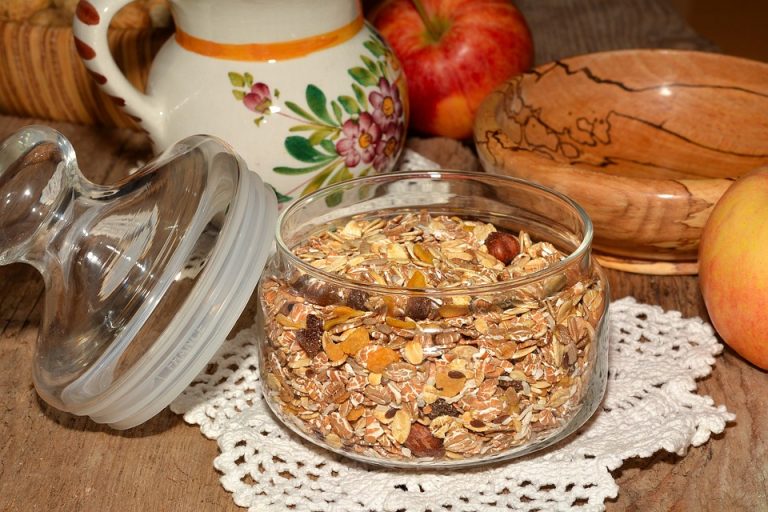Walking after meals blood sugar is a simple habit with powerful results: it means taking a purposeful walk after you eat to lower the spike in glucose that taxes your body. This practice matters because those post-meal spikes are what wear down insulin sensitivity, steal energy, and raise long-term risk for heart disease and diabetes complications. If you want a practical, proven way to protect your health and feel clearer and lighter after meals, this is it.
Contents
- Walking After Meals Blood Sugar: What It Means And Why It Works
- Seven Ways Walking After Meals Blood Sugar Drops Fast
- 1. Walk Right After You Finish Eating
- 2. Keep The Pace Brisk But Comfortable
- 3. Use Short, Frequent Walks Instead Of One Long Session
- 4. Add A Few Upstairs Or Hills To Boost Effectiveness
- 5. Pair Walking With Smart Meal Choices
- 6. Make Walking Social Or Ritualistic
- 7. Track Patterns So You Can Tweak Timing And Intensity
- Practical Examples To Make It Stick
- What The Science Says
- Common Objections And Real Answers
- Bottom Line
- FAQ
Walking After Meals Blood Sugar: What It Means And Why It Works
Short walks after eating cut the dramatic rise of glucose in your bloodstream by helping muscles take up sugar for fuel. Clinical research from reputable institutions shows brief, consistent walking after meals improves postprandial glucose control and insulin sensitivity. When you make walking part of the ritual of eating, you turn a passive metabolic lull into a deliberate, health-building moment.
How A Walk Changes Chemistry
Your muscles are sugar-hungry. Five to 20 minutes of walking signals them to pull glucose out of circulation. That reduces the height of the blood sugar peak and shortens how long it stays elevated. Studies in Diabetes Care and at major universities demonstrate that timing and intensity matter — gentle movement soon after meals often beats a single long workout done hours later for managing immediate post-meal levels.
Seven Ways Walking After Meals Blood Sugar Drops Fast
Below are seven practical, no-nonsense ways to use walking to bring down glucose quickly. Each tactic is actionable and backed by evidence or clinical reasoning. Use one, combine a few, or adopt them all. Your body will thank you.
1. Walk Right After You Finish Eating
Start within 10 to 30 minutes after you finish your plate. The sooner you move, the more you blunt the glucose surge. A brisk 10–20 minute loop around the block stimulates muscles to absorb sugar when it’s peaking. That timing is supported by research showing postprandial glucose control improves most when activity is near the meal window.
Make it realistic. Slip on comfortable shoes and commit to one short route. You don’t need to sprint. A purposeful walk will do the metabolic heavy lifting.
2. Keep The Pace Brisk But Comfortable
Aim for a pace that raises your heart rate slightly — enough that you can speak in short sentences but not sing. Brisk walking increases muscle glucose uptake more than a meandering stroll, but you don’t need to exhaust yourself. Studies comparing light ambulation with brisk walking find the latter produces greater reductions in post-meal glucose peaks.
If you’re carrying a phone or a lightweight jacket, let that be your only weight. Your body will use sugar more efficiently when your legs work steadily.
3. Use Short, Frequent Walks Instead Of One Long Session
Three 10-minute walks after each meal beat a single 30-minute walk at another time for smoothing out blood sugar across the day. Fragmenting activity into post-meal bursts keeps glucose from spiking repeatedly. Clinical trials show intermittent walking lowers postprandial readings more reliably than waiting for a scheduled gym session.
This is the easiest habit to sustain. After breakfast, lunch, and dinner — a quick walk. That simple rhythm is surprisingly powerful.
4. Add A Few Upstairs Or Hills To Boost Effectiveness
If your body allows, brief uphill segments or a flight of stairs add intensity without long duration. Short bursts of higher effort recruit more muscle fibers and increase glucose uptake. University researchers have found that small increases in intensity during short walks can produce outsized benefits for post-meal glucose control.
Be sensible. If stairs trigger pain or breathlessness, stick with level and brisk. Progressively add challenge only as you feel stronger.
5. Pair Walking With Smart Meal Choices
Walking is a tool, not a magic wand. Combine it with sensible portions and balanced meals — protein, fiber, healthy fats — to blunt spikes before they happen. When you pair a short walk after a carbohydrate-rich meal, the combined effect on lowering the glucose peak is greater than either strategy alone.
Think practical: if you plan a pasta dinner, plan a walk afterward. The two together make your body’s job easier and more predictable.
6. Make Walking Social Or Ritualistic
Turn post-meal walks into an enjoyable ritual. Walk with a friend, family member, or a dog. Social cues help you keep the habit, and the emotional lift reduces stress hormones that can raise glucose. Behavioral research shows habits form faster when tied to social patterns or daily rituals.
Keep it pleasant and nonjudgmental. When it feels like a reward, you’ll do it more consistently — and consistency is the secret to steady glucose control.
7. Track Patterns So You Can Tweak Timing And Intensity
Use a simple glucose monitor or a diary to see how a 10- or 20-minute walk affects your readings. You’ll start to notice patterns: maybe your breakfast spike is stubborn, or dinner needs a longer stroll. Clinical guidelines value personalized adjustments; what works for someone else might need fine-tuning for your body.
Small tweaks pay off. Shift timing, walk longer, or add hills until you find the sweet spot for your response.
Practical Examples To Make It Stick
– Walk to a nearby bench and back after lunch at work. Seize small windows.
– Make an evening habit of a neighborhood loop with a partner. Routine builds longevity.
– If mobility is limited, try seated marching for 10–15 minutes immediately after meals. Any muscle activity helps.
These are low-cost, high-return moves that slot into real life. The goal is simple: reduce the amount and duration of glucose sitting in your bloodstream after you eat.
What The Science Says
Research from academic centers, including trials reviewed by diabetes associations, shows that post-meal walking reduces the magnitude of glucose spikes and improves insulin sensitivity. A trial comparing postprandial walks with no walking reported meaningful reductions in blood sugar and improved overall glucose profiles. If you want to read more, clinical guidelines and university research pages summarize the evidence and provide practical protocols.
Common Objections And Real Answers
“I’m too busy.” Ten minutes is enough. A short walk after each meal is a better glucose-control strategy than biking an hour once a week.
“I don’t have energy.” A brief walk often raises energy and eases bloating. Your body rewards movement with circulation and clearer thinking.
“I have joint pain.” Low-impact options like treadmill walks, aquatic walking, or seated leg movement still stimulate muscle glucose uptake without joint stress.
These are real barriers, and small, sustainable adjustments overcome them.
Bottom Line
Walking after meals blood sugar control is one of the simplest, most reliable habits you can adopt to blunt post-meal glucose spikes and protect metabolic health. Short, brisk walks started soon after eating recruit muscles to absorb sugar, reduce the height and duration of glucose peaks, and improve insulin sensitivity. Pair this habit with balanced meals and consistent tracking, and you’ll see measurable improvements in how you feel and in clinical readings over time.
Make your post-meal walk a kind, nonpunitive ritual. Start small, keep it steady, and celebrate the clarity and energy that follow.
FAQ
FAQ
Is walking after meals blood sugar management safe for people with diabetes?
Yes, for most people with diabetes, walking after meals is safe and helpful. It lowers post-meal spikes and often reduces overall glucose exposure. Speak with your healthcare provider if you use insulin or medications that can cause hypoglycemia, because they may advise monitoring and timing adjustments.
How long and how often should I walk to see a benefit?
Aim for 10–20 minutes after each meal if possible. Three short walks spread after breakfast, lunch, and dinner often outperform one long workout for immediate post-meal control. Even one consistent post-meal walk per day produces meaningful benefits.
What if I can’t walk briskly because of mobility issues?
Any movement helps. Seated marches, gentle cycling, or water-based walking are effective alternatives. The key is activating large muscle groups soon after you eat so they use up glucose.
Will walking replace the need for medication or insulin?
Walking is a powerful tool but not necessarily a replacement for prescribed medication. It often complements medical therapy and sometimes reduces medication needs under clinical supervision. Always consult your clinician before changing medication.
Below is a short visual line followed by a final paragraph before references.
Take this as permission to move — gently, deliberately, and with purpose. Your body responds to consistent kindness. Start today with a short walk after your next meal and see how your energy and numbers respond.
References
– The American Diabetes Association provides guidance on physical activity and glucose management and explains how post-meal walking can affect blood sugar (http://www.diabetes.org).
– The National Institutes of Health hosts clinical studies and reviews that describe the impact of short postprandial activity on glucose and insulin sensitivity (http://www.nih.gov).
– Diabetes Care and university research summaries discuss trials where post-meal walking reduced blood glucose peaks and improved metabolic markers (http://care.diabetesjournals.org).








